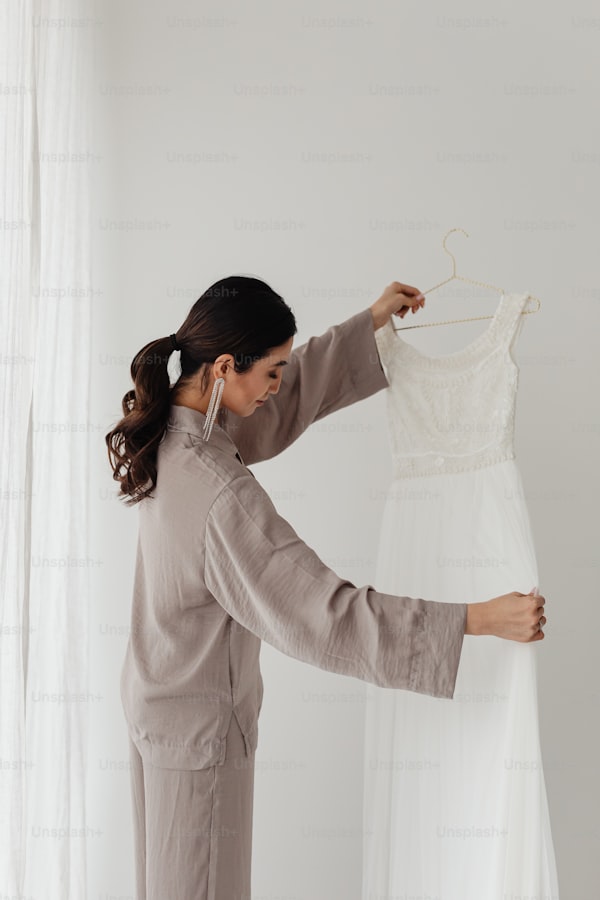Unlocking the Secrets: What Methods Are Used to Create a Wedding Dress with a Plunging Back Detail?
Introduction to Plunging Back Wedding dresses
Wedding dresses have always been a symbol of elegance and style, yet recent trends are pushing the boundaries of traditional bridal attire. One such trend that has captured the imagination of brides everywhere is the plunging back detail. This daring design choice offers a captivating blend of sophistication and sensuality, creating a stunning silhouette that can leave a lasting impression.
But how exactly do designers craft these remarkable garments? In this article, we will explore the various methods used in creating Wedding dresses with plunging back details, delving into the techniques, fabrics, and styles that contribute to the allure of these unique creations.
Understanding the Plunging Back Design
The plunging back detail is characterized by a low-cut design that typically extends to the waist or lower, providing an elongated and alluring appearance. This design element can vary from subtle dips to dramatic cuts, ensuring versatility for every bride. Understanding the different styles available will help you choose the perfect dress for your body type and personal aesthetic.
| Style Variations of Plunging Back Wedding dresses | Description |
| Classic Plunge | A traditional look with a modest plunge that adds elegance without being overly revealing. |
| Semi-Sheer Panel | This style incorporates a sheer fabric that offers coverage while still showcasing the back. |
| Dramatic Back Cuts | Bold designs with significant back exposure, offering a striking visual appeal. |
| Lace Detailing | Combining plunging backs with intricate lace patterns to enhance texture and charm. |
| Illusion Neckline | A sophisticated style that uses sheer fabric to create the illusion of a plunging back. |
Key Methods Used in Creating Plunging Back Wedding dresses
1. Pattern Making
The first step in creating any wedding dress is pattern making. Skilled designers create patterns that outline every piece of the dress, accounting for the plunging back detail. This meticulous process ensures proper fit and proportion, which is crucial given the nature of the plunge. Designers must carefully balance the amount of cutaway material with the right support to prevent wardrobe malfunctions.
2. Choosing the Right Fabric
Fabric selection plays a vital role in the overall look and feel of the dress. Common fabrics for plunging back dresses include:
- Silk: Luxurious and smooth, silk drapes beautifully, following the curves of the body.
- Chiffon: Lightweight and fluid, chiffon adds an ethereal quality to the design.
- Lace: Often used for sleeves or over layers, lace can create a delicate, romantic feel.
- Tulle: This sheer fabric gives volume and structure to the dress while allowing for a plunging back.
3. Construction Techniques
With patterns selected and fabrics chosen, the next step is constructing the dress. Here are key techniques utilized:
- Boning: Important for structure and support, boning is often sewn into the bodice to help maintain shape.
- Interlining: This additional layer provides support and modesty, especially necessary for plunging designs.
- Seaming: Curved seams may be required for a more tailored fit, ensuring the plunge sits properly and securely.
4. Fitting Sessions
Fitting sessions are crucial to achieve the perfect outcome. Designers will typically have several fittings with the bride where adjustments can be made to accommodate the plunging back detail. This personalized approach ensures that the bride feels comfortable and confident in her wedding dress.
Styling Tips for Plunging Back Wedding dresses
Accessorizing
When it comes to accessorizing a dress with a plunging back, less is often more. Here are some tips to enhance your look while allowing the dress to take center stage:
- Back Jewelry: Consider wearing a delicate back necklace that drapes down your spine for added elegance.
- Simplistic Earrings: Choose understated earrings that complement without overwhelming.
- Hairstyles: Opt for an updo or pulled-back hairstyle to fully showcase the plunging detail.
Choosing the Right Undergarments
When sporting a plunging back dress, it’s essential to select the correct undergarments. Look for:
- Backless Bras: These offer necessary support without visible lines.
- Adhesive Cups: Great for extra support without the bulk of a traditional bra.
- Shapewear: Provides a smooth silhouette under your gown.
Makeup and Hair Considerations
To complete the bridal look, makeup and hairstyle should reflect the elegance of the gown. Opt for an elegant updo or soft curls that frame the face while highlighting the back.
Additionally, choose a makeup palette that complements your skin tone and dress color, focusing on natural beauty with perhaps a bold lip or an enchanting eye.
Final Thoughts
As you embark on the journey of selecting your wedding dress, consider the allure and sophistication of a plunging back detail. The methods—ranging from pattern making and fabric selection to construction techniques—come together to create a breathtaking piece that embodies your style and personality.
Remember, the final look should not just be stunning, but also comfortable, allowing you to enjoy every moment of your special day. By understanding the methods used in creating these exquisite dresses, you can make informed decisions that ensure your bridal vision comes to life.
Whether you're drawn to a delicate lace design or a bold, dramatic cut, a plunging back wedding dress is sure to turn heads and create unforgettable memories.
